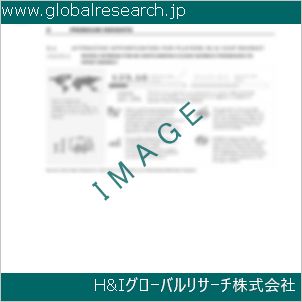Table of Contents
1 Industry Overview of Lead
1.1 Definition and Specifications of Lead
1.1.1 Definition of Lead
1.1.2 Specifications of Lead
1.2 Classification of Lead
1.3 Applications of Lead
1.3.1 Nuclear Application
1.3.2 Non-Nuclear Application
1.4 Industry Chain Structure of Lead
1.5 Industry Overview and Major Regions Status of Lead
1.5.1 Industry Overview of Lead
1.5.2 Global Major Regions Status of Lead
1.6 Industry Policy Analysis of Lead
1.7 Industry News Analysis of Lead
2 Manufacturing Cost Structure Analysis of Lead
2.1 Raw Material Suppliers and Price Analysis of Lead
2.2 Equipment Suppliers and Price Analysis of Lead
2.3 Labor Cost Analysis of Lead
2.4 Other Costs Analysis of Lead
2.5 Manufacturing Cost Structure Analysis of Lead
2.6 Manufacturing Process Analysis of Lead
3 Technical Data and Manufacturing Plants Analysis of Lead
3.1 Capacity and Commercial Production Date of Global Lead Major Manufacturers in 2023
3.2 Manufacturing Plants Distribution of Global Lead Major Manufacturers in 2023
3.3 R&D Status and Technology Source of Global Lead Major Manufacturers in 2023
3.4 Raw Materials Sources Analysis of Global Lead Major Manufacturers in 2023
4 Capacity, Production and Revenue Analysis of Lead by Regions, Types and Manufacturers
4.1 Global Capacity, Production and Revenue of Lead by Regions 2019-2024
4.2 Global and Major Regions Capacity, Production, Revenue and Growth Rate of Lead 2019-2024
4.3 Global Capacity, Production and Revenue of Lead by Types 2019-2024
4.4 Global Capacity, Production and Revenue of Lead by Manufacturers 2019-2024
5 Price, Cost, Gross and Gross Margin Analysis of Lead by Regions, Types and Manufacturers
5.1 Price, Cost, Gross and Gross Margin Analysis of Lead by Regions 2019-2024
5.2 Price, Cost, Gross and Gross Margin Analysis of Lead by Types 2019-2024
5.3 Price, Cost, Gross and Gross Margin Analysis of Lead by Manufacturers 2019-2024
6 Consumption Volume, Consumption Value and Sale Price Analysis of Lead by Regions, Types and Applications
6.1 Global Consumption Volume and Consumption Value of Lead by Regions 2019-2024
6.2 Global and Major Regions Consumption Volume, Consumption Value and Growth Rate of Lead 2019-2024
6.3 Global Consumption Volume and Consumption Value of Lead by Types 2019-2024
6.4 Global Consumption Volume and Consumption Value of Lead by Applications 2019-2024
6.5 Sale Price of Lead by Regions 2019-2024
6.6 Sale Price of Lead by Types 2019-2024
6.7 Sale Price of Lead by Applications 2019-2024
6.8 Market Share Analysis of Lead by Different Sale Price Levels
7 Supply, Import, Export and Consumption Analysis of Lead
7.1 Supply, Consumption and Gap of Lead 2019-2024
7.2 Global Capacity, Production, Price, Cost, Revenue, Supply, Import, Export and Consumption of Lead 2019-2024
7.3 USA Capacity, Production, Price, Cost, Revenue, Supply, Import, Export and Consumption of Lead 2019-2024
7.4 EU Capacity, Production, Price, Cost, Revenue, Supply, Import, Export and Consumption of Lead 2019-2024
7.5 China Capacity, Production, Price, Cost, Revenue, Supply, Import, Export and Consumption of Lead 2019-2024
7.6 Japan Capacity, Production, Price, Cost, Revenue, Supply, Import, Export and Consumption of Lead 2019-2024
8 Major Manufacturers Analysis of Lead
8.1 Manufacturer One
8.1.1 Company Profile
8.1.2 Product Picture and Specifications
8.1.2.1 Type I
8.1.2.2 Type II
8.1.2.3 Type III
8.1.3 Capacity, Production, Price, Cost, Gross and Revenue
8.1.4 Contact Information
8.2 Manufacturer Two
8.2.1 Company Profile
8.2.2 Product Picture and Specifications
8.2.2.1 Type I
8.2.2.2 Type II
8.2.2.3 Type III
8.2.3 Capacity, Production, Price, Cost, Gross and Revenue
8.2.4 Contact Information
8.3 Manufacturer Three
8.3.1 Company Profile
8.3.2 Product Picture and Specifications
8.3.2.1 Type I
8.3.2.2 Type II
8.3.2.3 Type III
8.3.3 Capacity, Production, Price, Cost, Gross and Revenue
8.3.4 Contact Information
8.4 Manufacturer Four
8.4.1 Company Profile
8.4.2 Product Picture and Specifications
8.4.2.1 Type I
8.4.2.2 Type II
8.4.2.3 Type III
8.4.3 Capacity, Production, Price, Cost, Gross and Revenue
8.4.4 Contact Information
8.5 Manufacturer Five
8.5.1 Company Profile
8.5.2 Product Picture and Specifications
8.5.2.1 Type I
8.5.2.2 Type II
8.5.2.3 Type III
8.5.3 Capacity, Production, Price, Cost, Gross and Revenue
8.5.4 Contact Information
…
9 Marketing Trader or Distributor Analysis of Lead
9.1 Marketing Channels Status of Lead
9.2 Traders or Distributors with Contact Information of Lead by Regions
9.3 Ex-work Price, Channel Price and End Buyer Price Analysis of Lead
9.4 Regional Import, Export and Trade Analysis of Lead
10 Industry Chain Analysis of Lead
10.1 Upstream Major Raw Materials Suppliers Analysis of Lead
10.1.1 Major Raw Materials Suppliers with Contact Information Analysis of Lead
10.1.2 Major Raw Materials Suppliers with Supply Volume Analysis of Lead by Regions
10.2 Upstream Major Equipment Suppliers Analysis of Lead
10.2.1 Major Equipment Suppliers with Contact Information Analysis of Lead
10.2.2 Major Equipment Suppliers with Product Pictures Analysis of Lead by Regions
10.3 Downstream Major Consumers Analysis of Lead
10.3.1 Major Consumers with Contact Information Analysis of Lead
10.3.2 Major Consumers with Consumption Volume Analysis of Lead by Regions
10.4 Supply Chain Relationship Analysis of Lead
11 Development Trend of Analysis of Lead
11.1 Capacity, Production and Revenue Forecast of Lead by Regions and Types
11.1.1 Global Capacity, Production and Revenue of Lead by Regions 2024-2029
11.1.2 Global and Major Regions Capacity, Production, Revenue and Growth Rate of Lead 2024-2029
11.1.3 Global Capacity, Production and Revenue of Lead by Types 2024-2029
11.2 Consumption Volume and Consumption Value Forecast of Lead by Regions, Types and Applications
11.2.1 Global Consumption Volume and Consumption Value of Lead by Regions 2024-2029
11.2.2 Global and Major Regions Consumption Volume, Consumption Value and Growth Rate of Lead 2024-2029
11.2.3 Global Consumption Volume and Consumption Value of Lead by Types 2024-2029
11.2.4 Global Consumption Volume and Consumption Value of Lead by Applications 2024-2029
11.3 Supply, Import, Export and Consumption Forecast of Lead
11.3.1 Supply, Consumption and Gap of Lead 2024-2029
11.3.2 Global Capacity, Production, Price, Cost, Revenue, Supply, Import, Export and Consumption of Lead 2024-2029
11.3.3 USA Capacity, Production, Price, Cost, Revenue, Supply, Import, Export and Consumption of Lead 2024-2029
11.3.4 EU Capacity, Production, Price, Cost, Revenue, Supply, Import, Export and Consumption of Lead 2024-2029
11.3.5 China Capacity, Production, Price, Cost, Revenue, Supply, Import, Export and Consumption of Lead 2024-2029
11.3.6 Japan Capacity, Production, Price, Cost, Revenue, Supply, Import, Export and Consumption of Lead 2024-2029
12 New Project Investment Feasibility Analysis of Lead
12.1 New Project SWOT Analysis of Lead
12.2 New Project Investment Feasibility Analysis of Lead
13 Conclusion of the Global Lead (CAS 7439-92-1) Industry 2024 Market Research Report
| ※参考情報 鉛は、元素記号Pbと原子番号82を持つ金属で、CAS番号は7439-92-1です。鉛は周期表の14族に属し、主に鉛鉱石から採掘されます。その特性や用途、関連技術について詳しく見ていきます。 鉛の物理的特性としては、柔らかくて重い金属であり、特に重さが特徴的です。鉛の比重は約11.34g/cm³で、これにより防音材や放射線遮蔽材としての利用が進められています。また、鉛は非常に低い融点(約327.5度C)を持つため、他の金属と比べて加工しやすく、鋳造や成形が容易です。この加工のしやすさは、歴史的にも多くの道具や部品に利用されてきました。 鉛の化学的特性については、主に二価または四価の状態で存在します。自然界では鉛鉱石として、ガレナ(PbS)などの鉱物形態で存在しています。鉛は酸と反応し、鉛塩が形成されます。また、空気中の酸素や水分と反応することで、表面に酸化鉛の層が形成され、これが腐食を防ぐ役割を果たします。しかし、鉛は毒性があり、生物に対して有害であるため、その取り扱いには注意が必要です。 鉛の種類には、鉛酸バッテリー用の鉛、放射線防護用の鉛、建設に使用される鉛などがあります。鉛は特に鉛酸バッテリーにおいて重要な役割を果たし、自動車やUPS(無停電電源装置)などに広く使用されています。このバッテリーは、鉛と酸を使用して電気エネルギーを蓄えることができ、再利用可能な特性を有しています。 鉛の用途としては、主に以下のようなものがあります。第一に、自動車用のバッテリーです。鉛酸バッテリーは、充電が可能であり、放電特性に優れています。第二に、放射線防護です。鉛の高い比重と密度は、X線やガンマ線を吸収しやすく、医療や産業において放射線防護材として広く使用されています。第三に、配管や屋根材などの建材としての利用もあります。鉛は耐腐食性があり、長期間の耐久性を持つため、このような用途も存在します。 ただし、鉛の有毒性からその使用は規制されています。特に、鉛を含む塗料や鉛の溶接が健康に及ぼす影響は深刻であり、神経系や血液系に悪影響を及ぼすことが知られています。このため、多くの国では、鉛を使用した製品に対して厳しい規制が存在しており、鉛を含む物質の取り扱いについて情報共有の重要性が高まっています。また、リサイクル技術も発展しており、使用済み鉛バッテリーから鉛を再利用することで、環境負荷の低減が目指されています。 関連技術としては、鉛フリーのハンダや、リチウムイオンバッテリーへのシフトなどが挙げられます。これらの技術は、環境意識の高まりや健康リスクの軽減を背景に開発されており、より安全で持続可能な素材の利用へと進化しています。また、鉛を使用しない新しい電池技術への移行が進められており、再生可能エネルギーとの組み合わせが期待されています。 結論として、鉛は多くの特性と用途を持つ金属ですが、その毒性から適切な管理と利用が求められています。鉛の用途は多岐にわたりますが、環境や健康に配慮した技術革新が今後の鍵となるでしょう。鉛を含む産業の未来は、持続可能性を考慮した今までにないアプローチによって切り開かれることが期待されます。 |
❖ 免責事項 ❖
http://www.globalresearch.jp/disclaimer

-gr.jpg)










